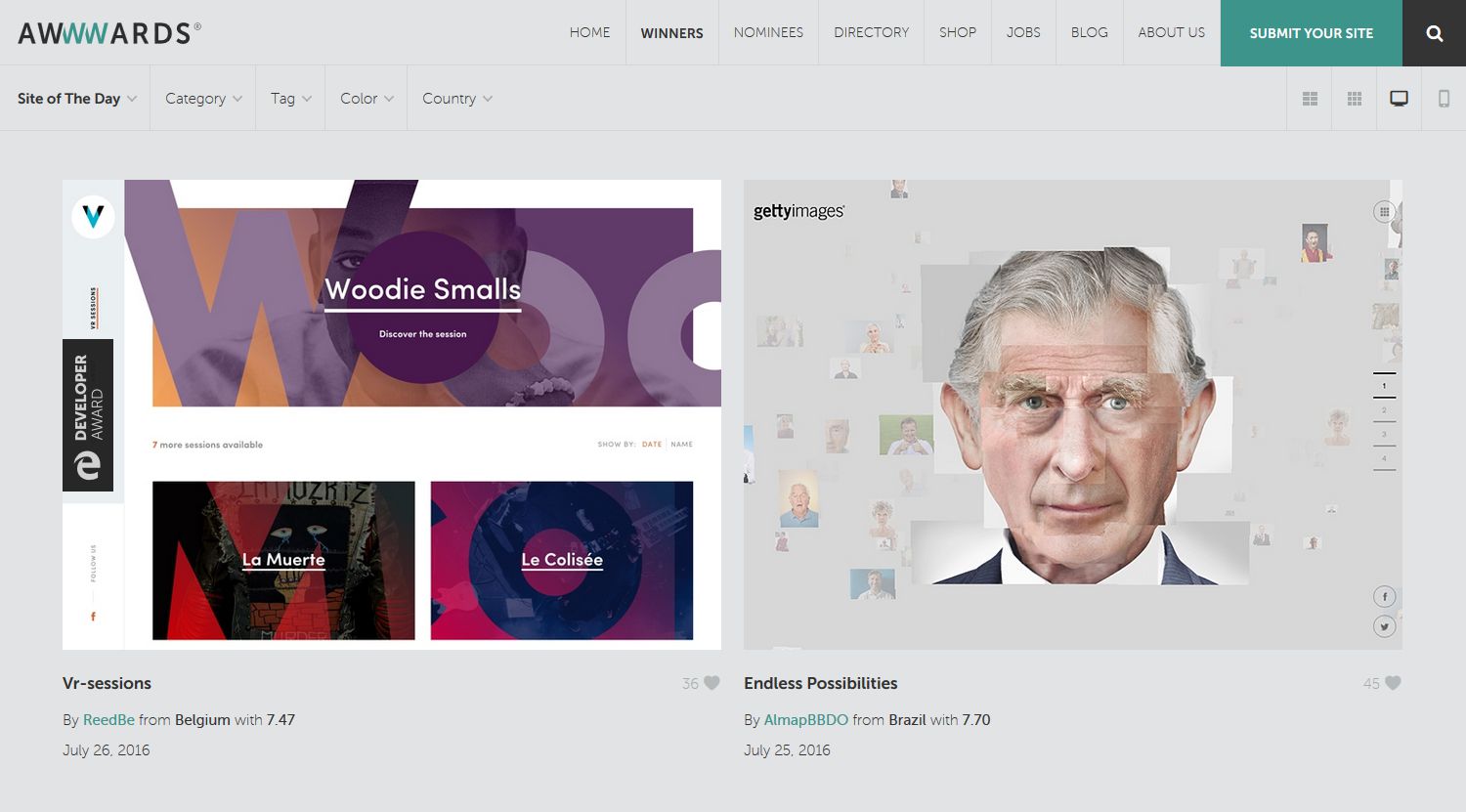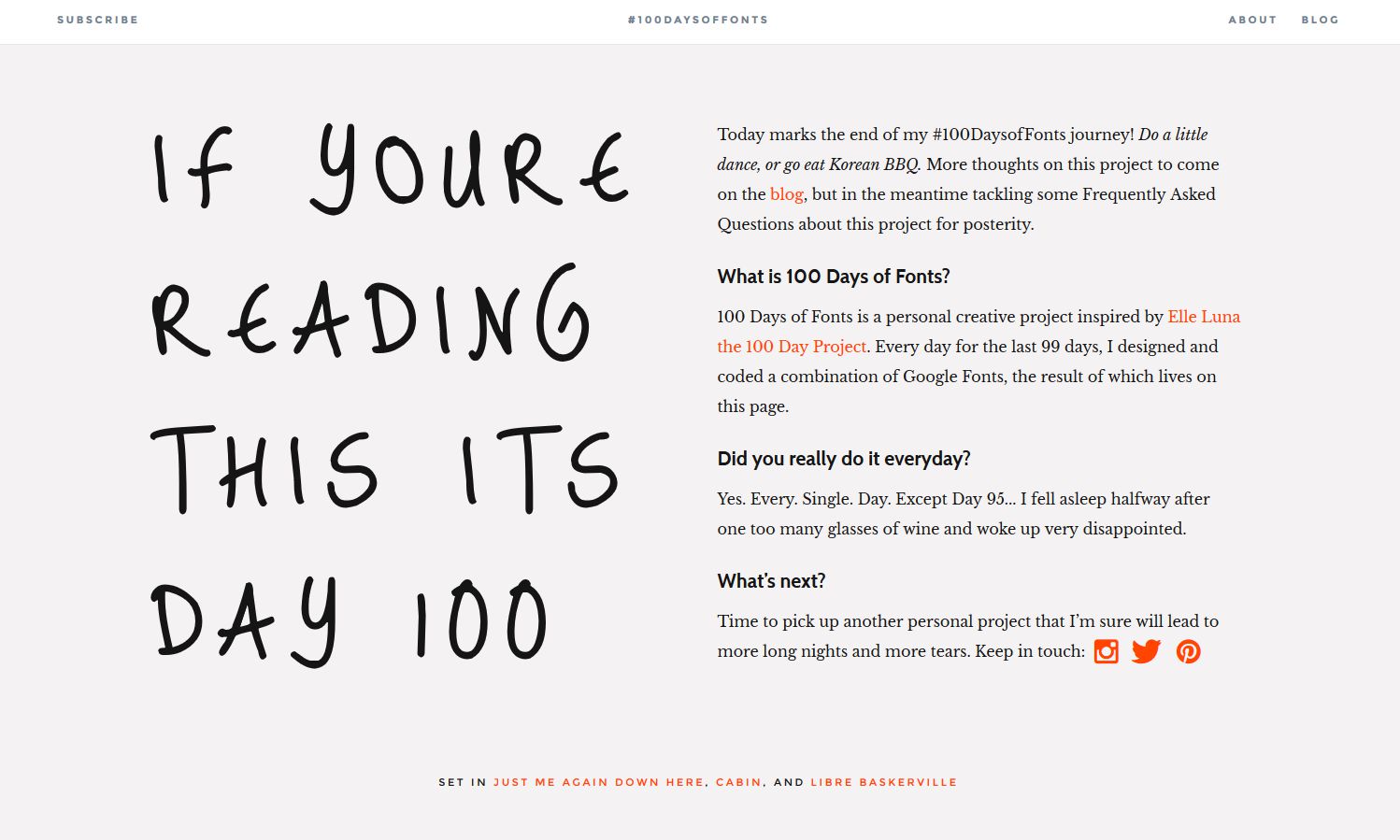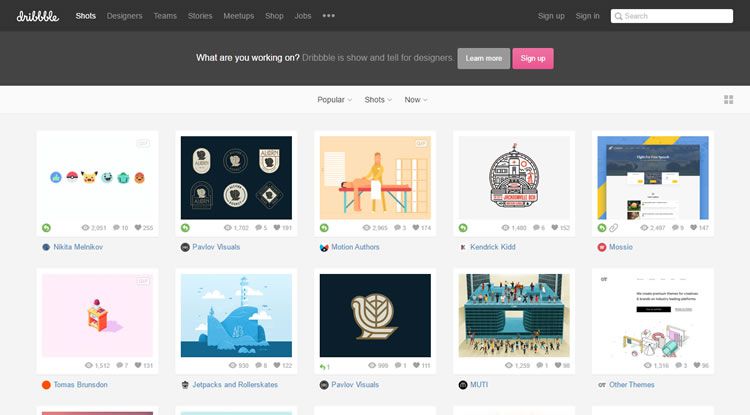The present-day web provides instantaneous, infinite, and more importantly, completely free access to information and educational materials. One of the professions that are able to use its vast potential to a hundred percent is web design.
Today, any homegrown creative with talent and a big desire to learn is able to grow themselves into a top level web designer, whose works are admired, and whose expertise is sought and valued among the most demanding of clients. And all this is possible without overly expensive schooling and lengthy, several-year courses.
In this article, we will give a number of tip, aimed towards novice and junior web designers, on the use of some well-known practices of effective and efficient self-education, which come completely free of charge, and require nothing more than patience, hard work, and a strong will.
Practice #1. Daily Designs
Have you ever wondered how many sites there are on the web today? By latest estimations, nearly 4.76 billion, and not less than two are launched every second. While not all of these websites may have the greatest design, many of them will – and those are your learning tool right there.
Make it a habit to start your day (or end it) with picking three websites of the best design to your judgement. Start a pinboard (Evernote or Pinterest are a good choice for this purpose, as they lets you use tags for handy categorization) where you’d collect links to these websites, and – preferably – screenshots of the design solutions which you found notable. Screenshots are good to have in addition to the links, because even the best of websites get redesigned from time to time, and when this happens, your favorite design solution may look different or be gone completely.

Some of the best sources to look for inspirational examples for your collection are web design inspiration sites, such as Awwwards, CSS Design Awards, WebAwards, etc. Each of these sites have handy built-in search filters, but make sure not to limit your search to your particular specialty only.
This practice is not just about making a database, though. The main reason for it is to develop your sense of aesthetics and build your own style. Gradually, you will discover that your selections become better and better, to the extent that you might even want to delete the first few. Learn from what you consider the best examples, and soon enough your experience will allow you to create masterpieces of a similar level.
Practice #2. Professional Assessment
This is what many junior designers are afraid of pursuing. For some reason, everyone assumes that the mentor is someone you must pay. In the field of web design, however, accomplished professionals are often eager to give free advice and expertise (and we will see why, in the Practice #5) to those that seek it.
Do a search for notable web designers and find those that are particularly renowned in the field you wish to excel. Subscribe to their blogs, follow them on Twitter, watch their lectures and presentations on YouTube and Slideshare. When you’ve done that, try reaching out to them, via email or social media messaging. There is no guarantee on how many responses you’ll get, but one or two will reply – and that is all you need.
Next, your primary objective is to have your mentor comment on your works. Do not ask for in-depth analysis – accomplished designers have other things to do. But giving a 3-4 sentence feedback is something they would not mind, if you ask nicely.
Do not underestimate the power of professional assessment of your works. Remember not to expect praise, even if you think the job has been done flawlessly. Ask for grounded, but ruthless critique, and use it as tool to identify and eliminate rough edges in the work being assessed.
Practice #3. ‘365 Challenge’
This is a popular method of acquiring professional experience through self-expression. What you need to do is start a blog or a social media page, and develop a habit to design at least something every day and publish it to your medium.

Why is this an awesome tool? Well, because it lets you:
- share your work with the world, and potentially become noticed on the global scale;
- receive feedback for your works, even if just in the form of likes and comments;
- Build your personal brand.
If you accept such a challenge, it is important not to be shy about sharing it. This way you will not only attract viewers, but also make it harder for yourself to quit. And the best thing about it, the bigger the audience you have, the harder the quitting will be.
At the beginning, you’ll owe nothing to no one. Just share what works you are proud of, and make it clear that more of the same will follow. In the course of the challenge, the pieces you post will definitely improve, and your progress will be clearly visible not only to your audience, but yourself as well.
If you think 365 days may be too long a period to aim for, try a monthly, or a quarterly challenge. Here is a good example of a completed 100-day challenge. it can be a huge challenge, but the end effect is tremendous, and not only in terms of professional growth and recognition, but also as a test of your sturdiness and will for accomplishment.
Practice #4. Global Socializing
Social media has eliminated distances and borders for people with the same passion. Many still do not fully realize how awesome an opportunity this is. There are hundreds of groups on Facebook, LinkedIn, and – heck, even Google+, devoted to web design.
And if the common social media is not enough for you there are also Behance and Dribbble. Both are a platform for designers to showcase their works. You probably already have your accounts, so make those accounts work for you! Hurl your best works on to several groups, honestly state your level of skill and ask for opinions. Some of them will of course be unnerving, but most will be insightful.

This practice has one more advantage, which may be not as obvious – it lets you learn to deal with objections, and sort out solid critique from a bucketful of unworthy praises and dislikes. This is a crucial skill for your future work, when you’ll have to deal with complex team projects and subjective design evaluations.
Practice #5. Design Reviews
When you feel confident and experienced enough, start reviewing the works of others. You can do it either in the social media groups you are subscribed to, or simply pick websites from your little personal chart (see Practice #1).
Do not confuse advice with expertise, however. The point here is to not show everyone how cool you are, but to see your own way more clearly. Always emphasize that your point of view is subjective, but try to honestly see how the work could be made better. Only then your advice will work for both you and the designer.
As you can see, the above practices are absolutely free of charge, and nevertheless, can contribute tremendously to your personal and professional growth. Feel free to try them out, and remember – it’s all in your head, and it’s all in your hands.
As a bonus, here is one last piece of advice for you:
Practice Everything You Learn
Reading ebooks, studying case studies and watching tutorials is worth little by itself. But if you try applying what you have learned right away, then you’ll feel the real effect.
- Installed a new software? Google how to use it, and try doing something in it at once.
- Heard about a new CSS technique? See if it can be used in one of your current projects.
- Read a UX case study? See if you can apply some of its tips in your work.
The secret of world-class web designers is that they are always eager to try something new. And if you think about it, doing so may be the only way to survive in such vast, evolving and ever-changing environment as the web is today.
Good luck in your designing prospects, and may the force of beauty, style and client satisfaction be with you!
Related Topics
Top